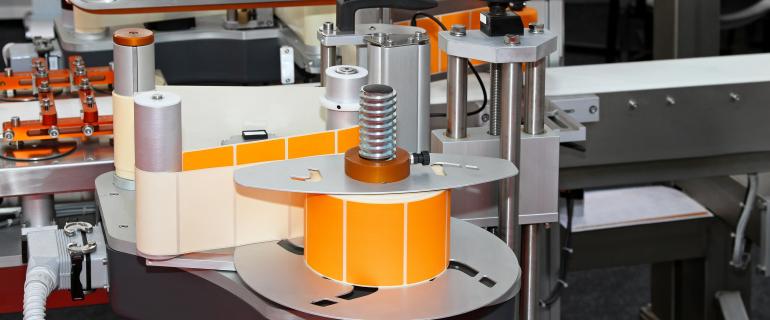How Print and Apply Labeling Can Increase Production
Adding a print and apply labeling system to your production line can increase throughput, reduce costs, and provide efficiencies for nearly every operation out there. While many production equipment considerations have pros and cons, print and apply systems beat out traditional pre-printed label systems by nearly every possible metric.
Because of the advantages print and apply label machines offer, every packaging and manufacturing operation should take the time to weigh their options for migrating to the more modern system. When they do, they’ll obtain the following advantages, all of which lower costs and complexity while raising throughput.
Ensure Labeling Consistency and Accuracy
Hand-labeling and legacy label application systems can lead to dramatic inconsistencies on packaging. Mistakes can mean that either the production line must halt or the defective product must be removed, corrected, and fed back through the line again. All of these tasks are labor intensive and increase the risks of downtime and lost productivity.
The risk of producing improperly labeled products that slip past QA and end up in the supply chain increases. Customers could send back stock as defective or, worse, demand chargebacks.
Non-manual processes run the risk of errors, too, since label stock must still be manually selected and chosen.
On the other hand, print and apply labeling systems can ensure accurate placement that is consistent with expectations and compliant with regulations.
Provide Better Product Tracking
Pre-printed labels can be serialized, but the storage and changeovers of label reels mean that perfect organization is required to maintain perfect serialization. For instance, a roll of labels can be used out of order, leading to jumbled production number labels that thwart attempts to trace shipments or perform recalls.
With an automated system, labels are created on the spot in perfect serialization. They also connect to a production database, allowing you to coordinate digital and physical efforts to ensure traceability. Perfectly consistent placement compared to manual application also makes the process of scanning labels easier.
As a result, recalls can be performed more reliably and suppliers can enjoy better relationships with customers who demand supply chain transparency.
Reduce Labor and Stocking Overhead
Pre-printed labels are sold at a price that allows printers to make a profit. Industrial packaging and manufacturing operations therefore pay a premium on pre-printed rolls, which can quickly add up their costs.
Additionally, pre-printed rolls must be stored, organized, and carefully changed according to the current production run. This situation creates additional labor and additional overhead because of the complexity of storing multiple label types.
Print and apply labels machines, on the other hand, can enable nearly instant changeovers through a few simple button presses. There’s also less intensity involved in changing out a generic roll compared to finding and selecting the appropriate printed roll for the current job at hand.
Also, companies do not have to worry about stocking levels of certain label rolls over others. They never have to worry about running out of certain labels due to under-ordering or wasting labels as a result of over-ordering.
Make the Switch to Print and Apply Labeling Systems Today
Raab offers the latest print and apply labeling solutions. Contact one of our industrial equipment experts today to find the solution matched to your exact needs and goals.


Comments
Add your comments